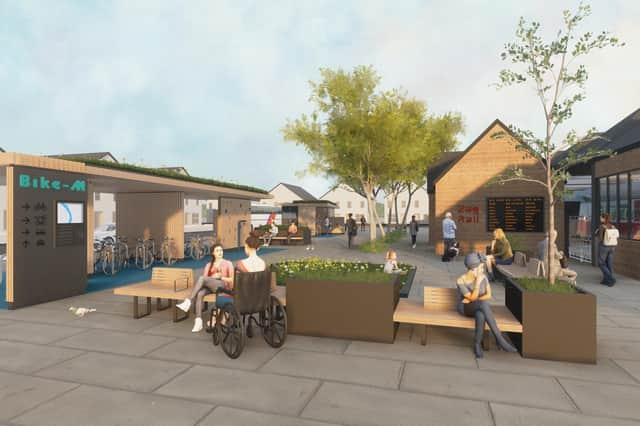Could this be the way forward in reducing car usage?


Collaborative Mobility UK (CoMoUK) published guidance showing how five different types of mobility hub could be introduced in various settings across Scotland, with a feasibility study carried out for each.
It includes one in Milngavie, which took inspiration from the layout of the town’s train station.
Advertisement
Hide AdAdvertisement
Hide AdMobility hubs bring together shared, public and active travel modes, along with community facilities, and redesign and reallocate space away from the private car.
They are used in many cities across Europe and North America and are increasingly spreading in the UK.
The hubs can take several different forms, ranging from larger interchanges in busy city centres to mini stations which are tailored to suburban or rural areas.
Designers used real places to create fictional but plausible settings for the five different typologies.
Advertisement
Hide AdAdvertisement
Hide AdA compact suburb or mini hub, inspired by Milngavie train station, was costed at £332,640.
It includes a bus interchange, an electric vehicle car club, a waiting area and a bike share scheme.
The hub also offers a quality, local space for people to congregate and socialise.
Other mobility hub locations included in the document are at Stirling’s Castle Business Park, Stonehaven train station and two in Glasgow city centre, with some local settings altered slightly to fit the exercise.
Advertisement
Hide AdAdvertisement
Hide AdThe examples illustrated by CoMoUK are all designed to be part of network of hubs and give sustainable, practical solutions to “first and last mile” connectivity, which helps to reduce private car usage in urban areas.
Mark Dowey, senior development officer (built environment) at CoMoUK, said: “Mobility hubs increase transport links, improve public health, bring economic benefits to the local community and save people money.
“They can help to reduce congestion and allow for the revitalisation of cities and towns by reclaiming space.
“Mobility hubs are already popular and delivering benefits in countries including Germany, the Netherlands, Belgium and the USA.”